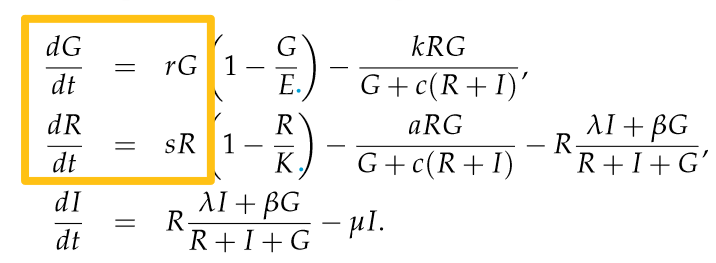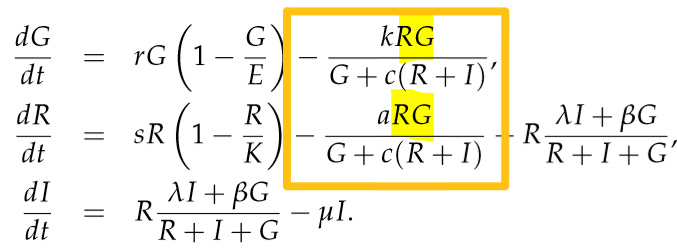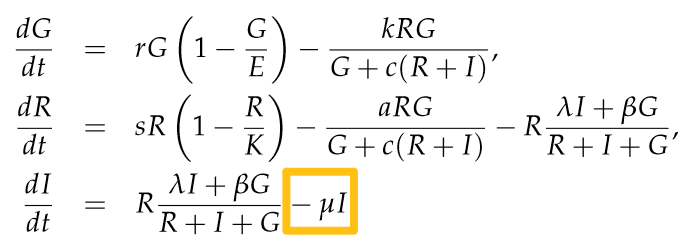We quite often try to use Friday’s lesson as an opportunity to do some form of extension, enrichment, revision, or any other kind of different activity with our Further Maths students. Having just finished teaching the material on Differential Equations to Year 13, I hoped to find an article that demonstrated their application in the ‘real world’. I figured mathematical ecology might well be the route to go down and after quite a quick search on Google, I came across what seemed to be the ideal paper.
Analysis of the Incidence of Poxvirus on the Dynamics between Red and Grey Squirrels
Should you wish to read along, you can find free access to the full paper at this link: https://www.mdpi.com/2227-7390/6/7/113
This seemed ideal for a couple of reasons:
- Who doesn’t love squirrels?!
- It has a system of 3 coupled differential equations
However, I quickly realised that not only does the initial model get ‘reparametrized’, there are approximately 15 pages of detailed analysis before you get to some discussion of the outcomes.(These pages are occasionally interspersed with some diagrams which at least have a bit of colour to catch the eye!)
How to get anywhere with this and Y13?
Another challenge I considered is that many of my students are non-native English speakers. However, I do know they are willing to trust me and try out activities!
It became clear that I would need to structure the work and focus their attention on key aspects at each step. It then dawned on me that the ability to ‘skim’ an academic paper for the highlights is a somewhat teachable skill.
I (hastily) put together a list of prompts that would guide us through the paper and through the lesson:
Some points that came up for discussion
- The difference between interspecies and intraspecies – a useful pair of prefixes to be able to distinguish
- Equilibrium points and if they are stable [demonstrated with a metre ruler: balanced horizontally on two hands it is in equilibrium and stable; balanced vertically on one hand it is (theoretically) in equilibrium but (definitely) not stable!]
- Notation for referencing: round brackets referring to equation numbers; square brackets referring to the references
Making sense of the DEs
Whilst the system of differential equations looks rather unpleasant even to me, there are aspects that can be teased out.
The highlighted terms here model a simple growth rate. With no other aspect in the model, both populations would undergo exponential growth which is unfeasible in the long-term.

The newly highlighted terms bring in a factor involving the carrying capacity of the populations. These prevent the long-term population growing without bound as, when G=E or R=K, their rate of population growth will be zero.

Whilst these terms are quite unpleasant to unpick, incorporating the product RG accounts for interactions between the two populations.

Then notice that the final negative term for dR/dt is the same as the first positive term for dI/dt. This is accounting for red squirrels becoming infected and hence their numbers no longer counting for population R but instead for population I.

And, lastly, notice that dI/dt includes a negative term for the mortality rate as a proportion of the size of population I.

Overall…
The students really appreciated doing this activity! And that was for not just its mathematical features (ie noticing the elements of the equations above), and modelling features (appreciating that modelling really does happen, and there are always assumptions and limitations), but also for the guidance of how you can go from the abstract and introduction, take in the equations, and then jump to the discussion or conclusions without necessarily needing to digest anything from the main body of the paper!
